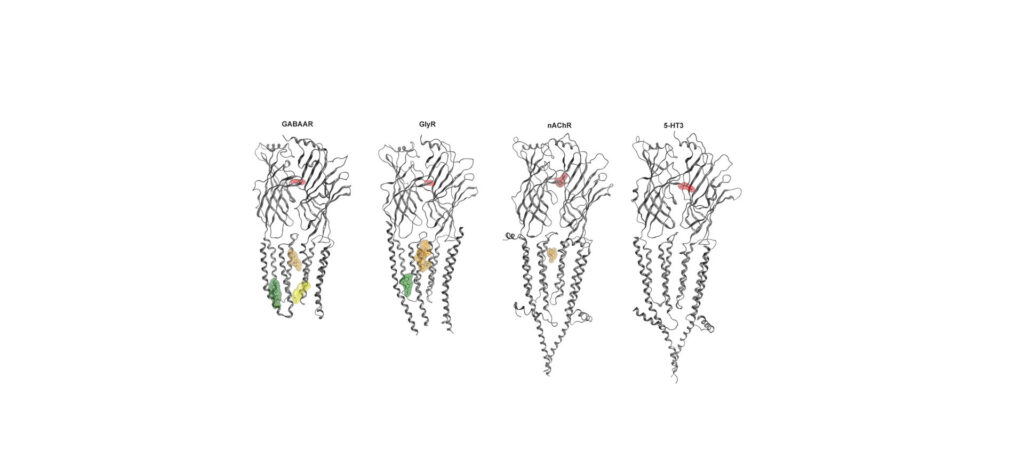Systematic Review: Cys-loop receptors on cannabinoids: All high?
Phytocannabinoids (plant based cannabinoids) are widely used for recreational and medicinal purposes, which in turn leads to basic scientific research casting more light on the role and involvement of the ECS and expanding the understanding of the functions of the “endocannabinoidome” in human physiology. At this point, various molecular interaction sites for cannabinoids emerge, encompassing different targets in addition to the classical CB receptors.
Table of contents
Endocannabinoids (eCBS) are endogenously derived lipid signaling molecules that serve as tissue hormones and interact with multiple targets, mostly within the endocannabinoid system (ECS).
Cannabimimetic molecules can be divided according to their origin, natural or synthetic, including phytocannabinoids (pCB’s) or synthetic cannabinoids (sCB’s).
Cys-loop receptors belong to the class of membrane-bound pentameric ligand gated ion channels, each family comprising multiple subunits.
Endocannabinoids
Endocannabinoids (eCBS) are endogenously derived lipid signaling molecules that serve as tissue hormones and interact with multiple targets, mostly within the endocannabinoid system (ECS). The ECS is a highly conserved regulatory system involved in homeostatic regulation, organ formation, and immunomodulation of chordates. The term “cannabinoid” evolved from the distinctive class of plant compounds found in Cannabis sativa, an ancient herb, due to their action on CB1 and CB2 receptors. CB1/2 receptors are the primary targets for eCBs, but their effects are not limited to the ECS. Due to the high interest and extensive research on the ECS, knowledge on its constituents and physiological role is substantial and still growing. Crosstalk and multiple targeting of molecules are common features of endogenous and plant compounds.

Cannabimimetic molecules
Cannabimimetic molecules can be divided according to their origin, natural or synthetic, including phytocannabinoids (pCB’s) or synthetic cannabinoids (sCB’s). The endocannabinoid system (ECS) consists of receptors, transporters, enzymes, and signaling molecules. In this review, we focus on the effects of cannabinoids on Cys-loop receptors.

Cys-Loop Receptors
Cys-loop receptors belong to the class of membrane-bound pentameric ligand gated ion channels, each family comprising multiple subunits. Mammalians possess GABA type A receptors (GABAAR), glycine receptors (GlyR), serotonin receptors type 3 (5-HT3R), and nicotinic acetylcholine receptors (nAChR). Several studies have shown different modulatory effects of CBs on multiple members of the Cys-loop receptor family. We highlight the existing knowledge, especially on subunits and protein domains with conserved binding sites for CBs and their possible pharmacological and physiological role in epilepsy and in chronic pain. We further discuss the potential for cannabinoids as first line treatments in epilepsy, chronic pain and other neuropsychiatric conditions, indicated by their polypharmacology and therapeutic profile.


